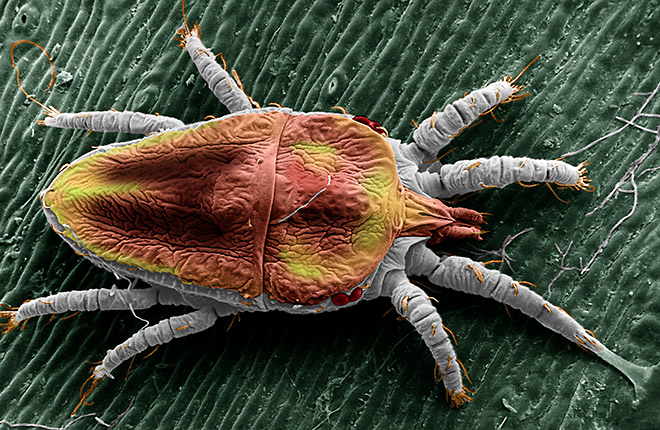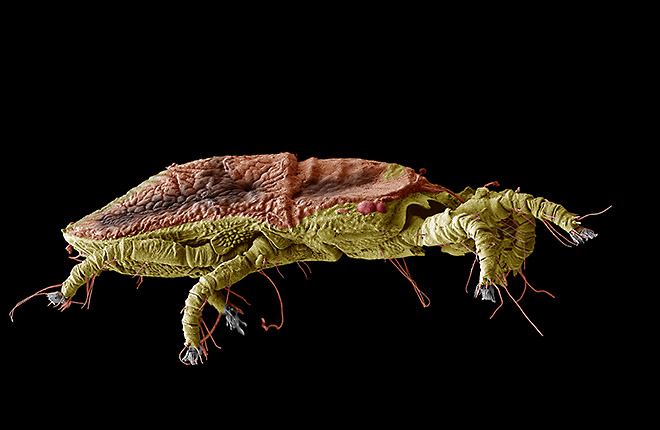Identifying Mites That Spread Citrus Leprosis
While the U.S. citrus industry continues to battle Huanglongbing (citrus greening), another threat to citrus is on the march from South America. Microscopic, mite-borne killers called "citrus leprosis viruses" have spread northward from Argentina to citrus-growing regions in Mexico, threatening a return to the United States, which has been free of citrus leprosis disease since the 1960s.
Agricultural Research Service (ARS) scientists are part of an international team working to pinpoint which Brevipalpus flat mite species transmit citrus leprosis disease. Symptoms in infected orange, lemon, lime, grapefruit, and other citrus trees include girdled branches, mottled leaves, low yield, and bitter-tasting fruit.
New clues about mite-pathogen associations are emerging from the team's investigations. These include identifying a large group of related viruses that can be transmitted by the mites and that also cause citrus leprosis. John Hartung, William Schneider, and Avijit Roy—all with ARS—-and Evan Braswell, with the Animal and Plant Health Inspection Service's Plant Protection and Quarantine program, are team members investigating the matter.
Some of the most important "intel" has come from the ARS Electron Confocal and Microscopy Research Unit in Beltsville, Maryland. There, unit leader Gary Bauchan, ARS entomologist Ron Ochoa, and visiting scientists Gabriel Otero Colina (Mexico) and Jenny Beard (Australia) have produced high-resolution images of about a dozen Brevipalpus flat mite species from around the world.
Measurements and other data gleaned from the images, combined with other research findings, clarified which flat mite species transmit citrus leprosis—namely, B. californicus, which harbors the viruses in the nucleus of its cells, and B. yothersi, which hosts the pathogens in the jellylike cytoplasm outside the nucleus.
In addition to producing whole-body, 1,000x images of the mites, Bauchan's group focused its powerful microscopes on specific parts of the pests' bodies. Of particular interest were the size, shape, location, and number of bristlelike appendages called "setae" and ribbed knobs on the mite's skin called "microplates." Taken together, these features can serve to differentiate the two flat mite species that transmit the viruses, explains Bauchan.
The team published its findings in Zootaxa and posted the images to "Flat Mites of the World"—an Internet resource for plant-health officials, border-based inspectors, and others tasked with keeping watch for these mites and their costly viral cohorts.— By Jan Suszkiw, ARS Office of Communications.
“Identifying Mites That Spread Citrus Leprosis” was published in the October 2016 issue of AgResearch Magazine.
Key Facts
- Mites in the genus Brevipalpus spread citrus leprosis viruses.
- Citrus leprosis viruses were eliminated from Florida citrus in the1960s.
- Viruses moving north from Argentina are once again threatening U.S. citrus.
- Electron and conventional microscopy techniques narrow "watch list" of flat mites that transmit viruses.
Full Story











